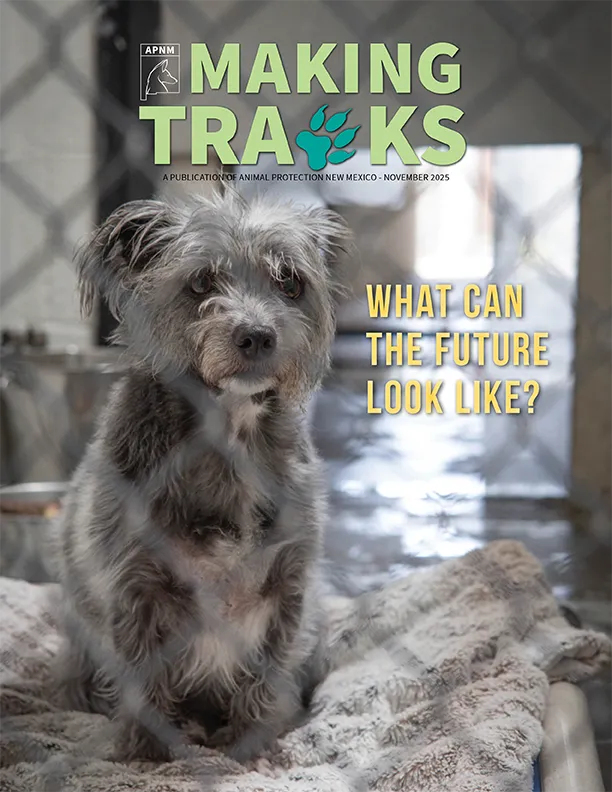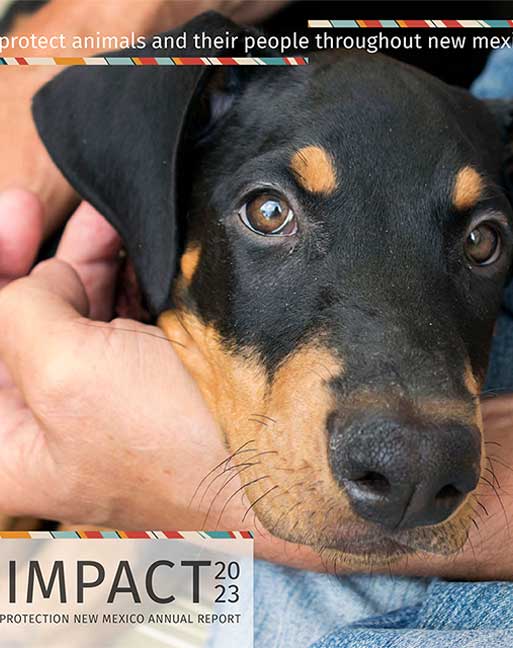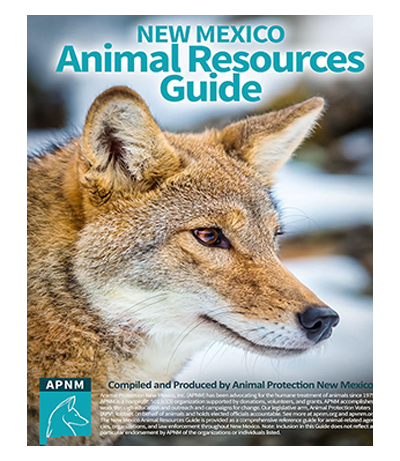New Mexico Spay/Neuter Assistance Funding Application Now Available
The Animal Sheltering Committee of the New Mexico Board of Veterinary Medicine is now accepting applications for grant funding from the Animal Care & Facility Fund. Funding requests will be accepted via the application form only, available at https://bvm.nm.gov under the New 2025 Grant Application Funding link. The deadline for submitting an application is July 17, 2025.
2025 Information and Guidelines
by the Animal Sheltering Committee,
New Mexico Board of Veterinary Medicine
June 2025
The Grant Program
The passage of New Mexico Senate Bill 57 (SB57) in 2020 provided a mechanism for funding affordable spay and neuter surgeries by qualified providers across New Mexico. The New Mexico Department of Agriculture collects these funds from fees charged to non-exempted pet food manufacturers that sell their products in New Mexico. The New Mexico Board of Veterinary Medicine (NMBVM) distributes the fund upon the recommendation of the Animal Sheltering Committee (ASC) under the NMBVM.
Elected by the NMBVM, the Animal Sheltering Committee (ASC) is the regulatory body charged with spearheading the state’s low cost spay/neuter program. That mandate includes recommending spay/neuter funding recipients to the NMBVM. The ASC is composed of five members from across the state. By law, no more than two members can be from any one county. The current ASC consists of members from five different counties. The five positions are as follows: (1) an animal shelter director; (2) a veterinarian; (3) a member of the public; (4) a representative of an animal advocacy organization; (5) someone trained in euthanasia protocol.
Grant Eligibility: Who May Apply?
Individuals, nonprofit organizations, animal shelters, and euthanasia agencies may receive assistance for dog and cat spaying and neutering, provided that the assistance to individuals and nonprofit organizations shall only be given to individuals who have, or to nonprofit organizations that shall only provide assistance to serve recipients who have, a household income that does not exceed 200% of the current federal poverty level guidelines, below:
Federal Poverty Guidelines 2025
| Persons in Household | Poverty Guideline | 200% of Poverty Guideline |
| 1 | $15,650 | $31,300 |
| 2 | $21,150 | $42,300 |
| 3 | $26,650 | $53,300 |
| 4 | $32,150 | $64,300 |
| 5 | $37,650 | $75,300 |
| 6 | $43,150 | $86,300 |
| 7 | $45,650 | $97,300 |
| 8 | $54,150 | $108,300 |
Income Verification. Organizations must verify household income for those receiving assistance. A simple way to do that is with a short affidavit signed by end users of spay/neuter services. Organizations that receive funding are responsible for the verification of eligibility for services and keeping records of such verification.
There are no residency requirements for organizations applying for funds or for practitioners performing the surgeries. However, all individuals receiving assistance for spay and neuter must be residents of New Mexico.
Scope of Grant: Expenses Covered
Shelters, local governments, and non-profit rescue organizations applying for grant funds should consider the following:
Purpose. Spay and neuter proposals must meet the purpose of SB57. Proposals should include projects that result in increasing the number of spay and neuter procedures provided and/or building the organization’s capacity to provide spay/neuter services on an ongoing basis.
Projects for spay/neuter can include feral or free-roaming animals. Organizations should be cognizant of local ordinances when dealing with feral or free-roaming animals.
Amount. There is no minimum organizations may request. Grants are capped at a maximum of $50,000.
Vaccines and Microchips. The cost of core vaccines can be included in grant expenditures. Core vaccines are: Rabies, FVRCP (cats), DAPPV (dogs). There is a $12 maximum per vaccine that may be attributed to vaccine cost covered by the grant. The cost of microchipping, however, is not included.
Transportation. Transportation costs may be included. This includes transportation for organizations or individuals providing the surgeries as well as costs to organizations who are providing transportation of animals to and from clinics.
Equipment. The purchase of equipment – directly for surgery, increasing surgical capacity, or for animal capture (e.g., feral cat traps) – up to $5,000 may be included. Any equipment over $5,000 is considered a capital expenditure, however, and may not be included.
Staffing & Training. The cost of staffing may be included, including for contract or temporary staff. High quality, high volume training for veterinarians and surgical staff also may be included. These costs may only be covered for the purpose and duration of the grant, not in perpetuity.
Marketing/Outreach/Educational Materials: These may be included but are limited to $500 per grant.
Co-pays. Grant recipients may not charge pet owners “co-pays;” however, surcharges for more complicated surgeries (or for additional costs of vaccines) are permissible up to $50 per surgery.
Requirements for Grant Satisfaction
Grant proposals should contain projects that will be completed within 12 months of receiving funding. Grant awardees shall repay to NMBVM any disbursed funds not spent or obligated within this 12-month period. Projects should have a specific area to be targeted, examples include, but are not limited to, a city, species, county, neighborhood etc.
Multiple organizations may partner together and submit a single application.
Significant changes in the scope of work proposed in the grant application are not permitted. Minor changes that adhere to the original intent of the grant and maintain the integrity of the project may be proposed and considered by the ASC and NMBVM.
Organizations who are awarded grant money shall provide NMBVM with a mid-term and final report using the forms provided by NMBVM. Reports shall include the amount of funds spent as well as the number and types of surgeries performed during the grant period.
Although not required for participation, the ASC encourages organizations to use funds to “match” all or some portion of the grants awarded because matching funds increase the total impact of the proposed project. An example of matching funds would be funds from the organization that will cover the cost of microchips for animals being spayed and neutered.
Further questions? Contact the New Mexico Board of Veterinary Medicine or Judy Wolf at judy@apnm.org




